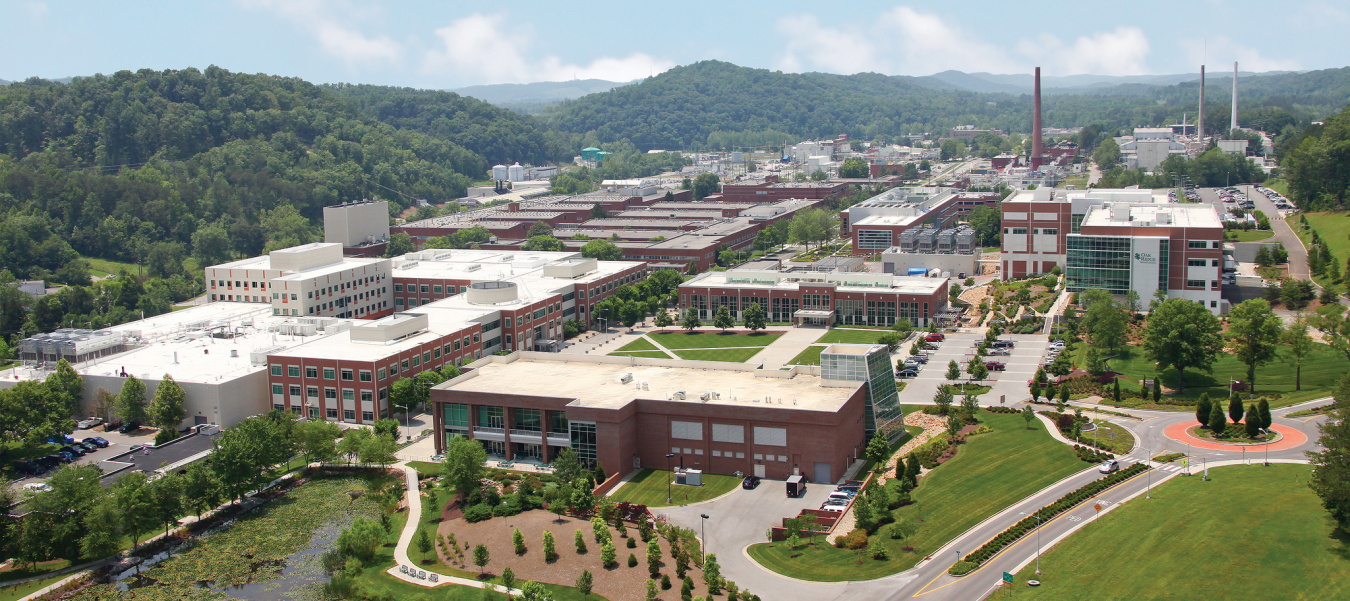
An aerial view of the Oak Ridge National Laboratory campus.
The U.S. Department of Energy’s (DOE) Oak Ridge National Laboratory (ORNL) is the nation’s largest multi-program science and technology laboratory. ORNL's mission has grown and expanded through the years, and now it is at the forefront of supercomputing, advanced manufacturing, materials research, neutron science, clean energy, and national security.
Originally known as Clinton Laboratories, ORNL was established in 1943 to conduct the pilot-scale production and separation of plutonium for the World War II Manhattan Project. The laboratory was also highly involved in reactor designs and isotope research and production.
ORNL has a large inventory of excess contaminated facilities and legacy waste from previous decades of research. These present risks to the site’s employees, important world-leading research, and investments in new infrastructure.
The ORNL site occupies more than 4,000 acres and includes facilities in two areas—Bethel Valley and Melton Valley. Bethel Valley, which includes the central campus area of ORNL, includes reactor facilities, isotope production facilities, waste treatment facilities, and research facilities. Melton Valley includes reactor facilities, research facilities, waste treatment facilities, and waste management areas.
Numerous projects are underway to address the large inventory of excess, contaminated facilities at ORNL. Those buildings include former research reactors and numerous isotope production facilities. Many of these 1950s and 1960s-era facilities are categorized as high-risk due to their contents and contamination levels. While demolition is underway on some, crews are inside others performing characterization and deactivation activities. These efforts are reducing risks, enabling modernization, and opening land to support future research missions.
EM is also focused on processing and disposing numerous waste streams from ORNL. The highest priority is removing the remaining inventory of uranium-233 stored, which is the oldest operating nuclear facility in the world. Removing this material will eliminate significant costs associated with keeping this material safe and secure. EM has disposed of more than half of the inventory, and the remaining material required processing before it can be shipped out of state for disposal. Employees finished processing the low dose portion of the inventory in gloveboxes, and in 2022, they began processing the high dose portion in hot cells.
Oak Ridge is nearing completion on processing and shipping its inventory of legacy transuranic debris waste that was stored on site. 94 percent of the contact-handled and 78 percent of the remoted-handled transuranic waste has been shipped for disposal.
EM’s cleanup goals at ORNL:
- Demolish the final portion of former Radioisotope Development Lab in 2026
- Complete demolition of Isotope Row facilities in 2027
- Complete uranium-233 processing and disposal in 2028
- Complete processing and disposal of transuranic waste in 2028
- Complete demolition of Oak Ridge Research Reactor in 2028
- Demolish the inventory of high-risk excess contaminated facilities
- Dispose the inventory of legacy sludge transuranic
- Complete remediation of soil and groundwater

